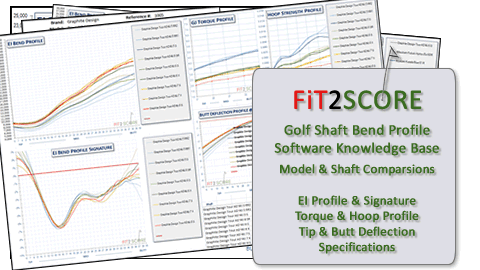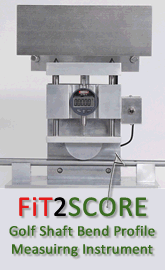OBAN ISAWA GLD Golf Driver Shaft Review
 By Russ Ryden, Fit2Score, A Dallas Fort Worth Club Fitter & Club Maker
By Russ Ryden, Fit2Score, A Dallas Fort Worth Club Fitter & Club Maker
The Highlands Performance Golf Center, Carrollton Texas
and Daniel Spurling, PGA, Director of Player Development
Lonnie Poole Golf Course
Golf Digest Certified America’s 100 Best Club Fitters
![]()
My first impression of the new Isawa GLD is stunning. I have grown fond of Oban golf shafts for that very reason. You can spot them from a mile away. Their bright colors and well-placed shaft bands turn heads on the range and the course. I’ve always told my customers that if what they’re looking down at doesn’t inspire confidence, then they shouldn’t put it in their golf bag. Oban certainly helps players there. The Isawa GLD is a time-tested design. Soft mid and firm tip shafts are a great option for many players. If you’re ready to invest some money into your equipment and don’t have access to a professional Club Fitter this type of shaft would be a safe bet.
Most shafts will have different launch characteristics as they span through their weights and flexes. The GLD consistently produced similar flight through the 7 offerings. When paired with their appropriate players the shafts remained stable through on and off-center strikes and transmitted sufficient feel back up through the handle. It was notable that less skilled players, were able to more accurately identify where the strike was located on the club face while testing the GLD. They commented that they hadn’t had the ability to identify that in their previous clubs. The torque numbers are exceptionally low for the price point Oban is offering its players. In the most laymen of terms the torque value is going to correlate with how bad your off-center strikes are going to be. When you see low shaft weight and low torque you can expect to pay big bucks. The Isawa starts with a softer butt section reenforced with a new proprietary carbon fiber material integration. There is a slight increase in stiffness in the upper mid-section around the 30in mark with the same bump in stiffness a little lower down the shaft in the extra stiff 60g and 70g shafts. I’m wondering if this is a nod to the very successful original Isawa from Oban released in 2015.
A fitted golf shaft is a platform for consistency. The fitter’s responsibility is to find the correct composition of golf club in order for the player to hit the center of the club face as consistently as their skill level will allow. I found, like the profile suggests, the GLD fits a wide variety of players. Where I see the GLD separate itself from similar shafts in its category is the butt section. When you have a stronger tip section you have to give up some rigidity somewhere else in order to translate feel back to the hands. In most cases it’s the butt section of the shaft that gets thinned out. Fitting players into the correct butt stiffness is the hardest part of club fitting because butt stiffness correlates with feel. Feel is the one thing you can’t teach. It’s organic and must be self-discovered. If you give a discerning player a shaft with too strong a butt section, they are going to tell you it feels boardy. The GLD is equipped with a softer butt section than a lot of shafts that are stronger on the bottom end. This is where it found a place in my fitting matrix. Oban has integrated a proprietary carbon fiber material to reenforce the weaker butt section of the GLD giving it exceptional energy transfer back to the players hands. I have the most success fitting the Isawa GLD with players who have back swings short of parallel. A short backswing usually denotes a quick transition and faster tempo. These swing characteristics put more stress on a shaft. When you add speed to that mix you automatically start to consider stronger shafts. I wouldn’t describe the GLD as a strong golf shaft but it certainly feels softer than it plays. The weaker butt section of the GLD provides exceptional feel to players while allowing them to venture into a stronger tip than they are used to. I recommend the GLD to players who have faster than average tempos who are looking for enhanced feel from a stronger mid launch mid spin shaft.
Daniel Spurling
To continue reading this section of the review, you must be registered at a higher level membership.
Russ




